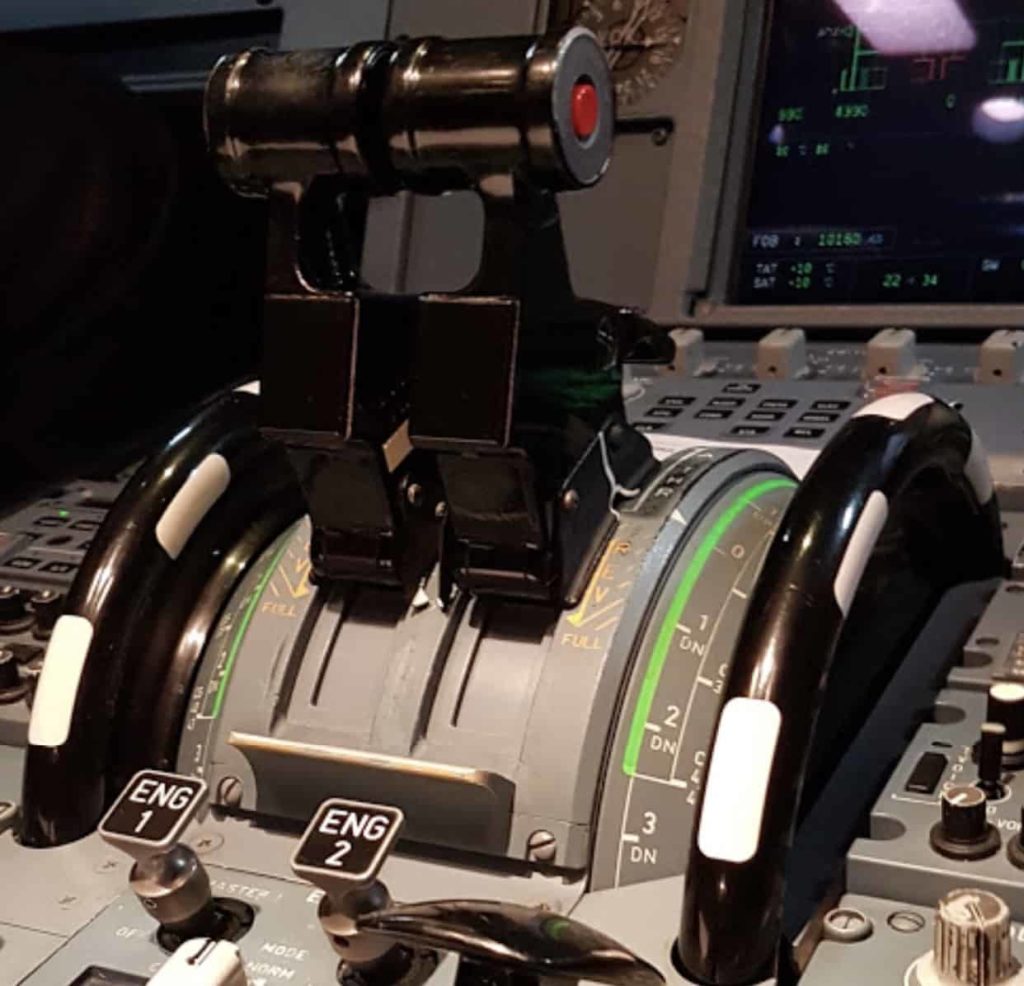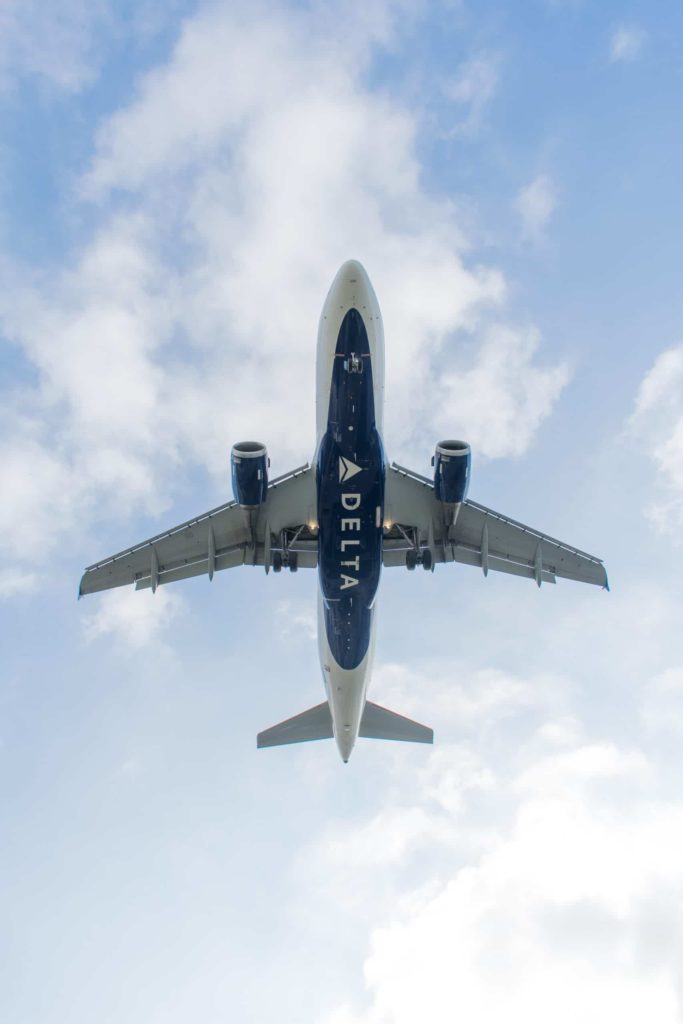Every A320 pilot needs to have a solid understanding of the A320’s flight control laws.
Join us for a super quick overview of the basics.
Control Law Basics
The A320’s flight control computers utilise three different control laws to determine how the aircraft will react to a particular control input.
The three control laws are Normal, Alternate and Direct.
Each one processes your stick inputs in slightly different ways.
This means that the control law being used determines how the aircraft will respond to your stick input.
In fact, Airbus defines a control law as the relationship between the pilot’s input on the stick and the aircraft’s response.
Airbus defines a control law as the relationship between the pilot’s input on the stick and the aircraft’s response.
A Quick Look Behind the Scenes
Remember that the control law in use at any given time can change with the phase of flight or with failures within the system.
This means that the same stick input can produce very different aircraft responses.
Some control laws have built-in safety features called protections.
Protections are elements within the computer code that help to keep the pilot from exceeding important aircraft envelope limitations.
Protections can also help get the aircraft back into the envelope when these limitations have been exceeded.
Normal law offers the most protections.
Alternate law offers a reduced number of protections.
Direct law is the most basic control law with sporty handling characteristics and no protections available.
The entire package of computers, control laws and protections is known as a fly-by-wire system.
Until next time, be kind, be smart, fly well.
Trimming the stabiliser allows the elevator to move to a neutral position, reduces drag and gives the elevator full authority to act over its entire range.
Flying the Auto-trim
In addition to helping maintain a neutral elevator position, the auto-trim also makes the A320 incredibly easy to fly in pitch because it is always trimming the aircraft for you.
You can simply point the nose wherever you want to go and then let go of the stick.
The aircraft’s nose will stay right where you left it because it’s being auto-trimmed and stick-free, the control laws will maintain flight at 1G.
Because the auto-trim operates continuously and automatically, the A320 can deal with changes in speed and thrust, as well as cope with atmospheric turbulence, all stick-free.
However, keep in mind that while it is fast, it’s not instantaneous, and so may not be able to immediately compensate for fast changes in thrust and/or speed.
Equally important to understand is that the movement of the trim wheel is silent and largely outside your peripheral view, so it’s easy to forget that it’s always happening.
I often have trainees rest their hands on the RMP/ACP so that their knuckles are very lightly resting against the trim wheel.
From this position, it’s easy to feel the trim wheel moving which can help you develop an awareness of how often and how much the trim wheel moves.
Give it a try the next time you’re flying or in the sim as it will likely surprise you!

Aircraft Stability and the Auto-trim
While the auto-trim is aerodynamically efficient and allows the full range of the elevator to be available at all times, it does have some interesting ramifications for the Airbus pilot.
Let’s take a look.
Remember how we talked about the speed stability of a conventional aircraft.
Well, the Airbus is a completely different animal, because rather than being speed stable, the Airbus is pitch stable.
To more clearly explain this, let’s imagine a conventional aircraft flying at 10,000’ at a speed of 250 knots.
The aircraft is in trim.
If we pull the thrust slowly back to idle, and take our hands off the controls, the aircraft will pitch down.
This pitch down is due to the natural stability of the aircraft which is a function of the CG being forward of the Center of Lift.
As the speed increases above 250 knots, the extra lift will cause it to pitch up.
As it pitches up, it will now lose some speed and lift and this will eventually cause it to pitch down again.
These oscillations will continue and become smaller and smaller until the aircraft once again stabilises at its trim speed of 250 knots.
Since there is no thrust, this will mean the aircraft will be descending.
Now, let’s see how the A320 will react in the same situation.
Again, let’s assume we are level at 10,000’ at 250 knots and in trim.
When we slowly pull the thrust off the A320, the flight control computers will immediately sense the change in G loading.
The computers will then command some elevator to maintain the stick-free 1 G flight.
The auto-trim will start trimming the stabiliser so that the elevator remains as neutral as possible and the aircraft will do it’s best to maintain 1G flight, which in this case is a level flight path.
Without thrust, the speed will begin to decay, but even so, the auto-trim will continue to trim the aircraft to maintain 1G flight.
In fact it will continue to trim the aircraft all the way back until the speed gets dangerously slow.
It seems strange, but Airbus designers traded speed stability for pitch stability.
This makes the A320 very easy to fly, but gives it a very different stability profile.
The Airbus A320's different stability profile is one reason why Airbus designers needed to program rules that protect the aircraft at both ends of the speed scale.
The Airbus High Angle of Attack Protection and High-Speed Protection are both good examples of this and were designed in some part to prevent the aircraft from trimming itself into a stall or accelerating itself into an overspeed.
So, there you go.
By now, you should have a slightly better idea of how the Autotrim system works and impacts the design goals and stability of the A320.
Be kind, be smart, fly well.
Until next time…



